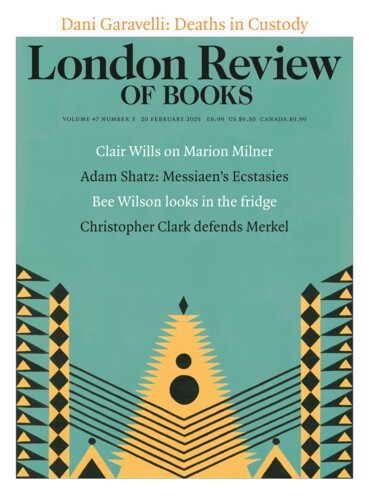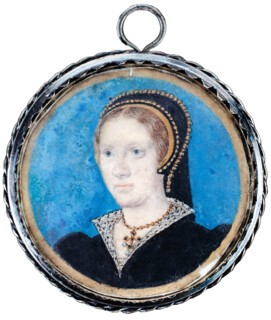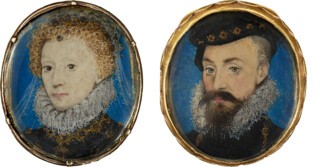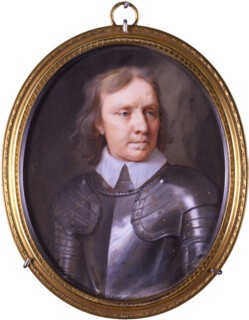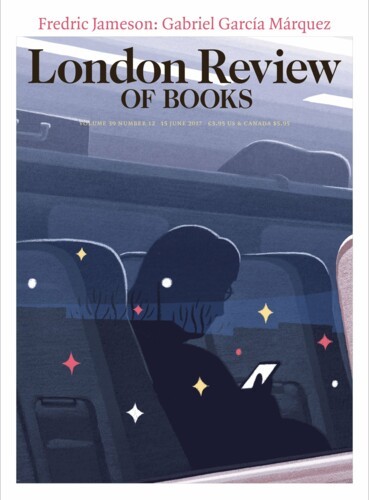In 2004, Compton Verney, the Warwickshire seat of the Verney family for nearly six hundred years, opened to the public as an art gallery. British portraits, in a variety of media, are central to the museum’s collection, but over the past ten years or so, Compton Verney has become a destination for a very particular type of portrait: the miniature, which flourished in Britain from the 16th to the 19th century, when it was eclipsed by the advent of photography.
Often small enough to be held in the palm of the hand, portrait miniatures were private images, sometimes intended only for the eyes of a particular recipient. Unlike large oil paintings, miniatures demand to be experienced close up. They had the great virtue of being portable – and, therefore, of helping to create intimacy (or the illusion of intimacy) over long distances. Some miniatures were encased in modest wooden boxes or frames. Often, however, they were set in lockets, brooches or other pieces of jewellery. The sitter was someone you wanted to keep close to your heart.
Miniatures were exchanged between husbands and wives, parents and children, brothers-in-arms; they were deployed as love tokens by courting couples (and illicit lovers) and as memento mori by widows and widowers. They also played an important role in international diplomacy, particularly in the 16th and early 17th centuries. Their exchange was an integral part of royal and dynastic marriage negotiations: a means by which a potential spouse, and the splendour and sophistication of his or her court, might be assessed.
Since 2013, more than eight hundred miniatures have been on long-term loan to Compton Verney from the Dumas Egerton Trust Collection, assembled by Tim Dumas, who set himself the impossible but heroic challenge of assembling a collection of miniatures which would include at least one signed example by every miniature painter ever to have worked in the British Isles. Six years later, in 2019, the Grantchester Collection – more than forty British miniatures from the 16th, 17th and 18th centuries – was given to the museum by Lady Grantchester, the sister of Sir Peter Moores.
To celebrate its twentieth anniversary, Compton Verney has mounted The Reflected Self: Portrait Miniatures, 1540-1850 (until 23 February). Spread across three large rooms, the exhibition tells the story of the portrait miniature in Britain using pieces from the Dumas Egerton Trust and Grantchester Collections as well as loans from many private collectors. In addition to the miniatures themselves, it includes displays of the materials and tools used by miniature painters, and a film in which the techniques of miniature painting are demonstrated. There are also examples of the types of clothing depicted in the portraits: 16th and early 17th-century lace ruffs and cuffs, an early 17th-century pike officer’s steel breastplate, a pair of mid-17th-century buff leather gauntlets, and so on – all signifiers of wealth and gentle status.
The earliest miniatures – or limnings, as they tended to be called in Britain before the mid-17th century – were done in watercolours on pieces of vellum stretched until they were as thin as onion skin. In order to create a sufficiently stiff working surface, the vellum was affixed with starch to a pasteboard tablet (usually an ordinary playing card), then burnished on both sides with a large canine tooth to remove any lumps and bumps. Pigments were activated by the addition of water and, as a binder, gum arabic. Typically, limners mixed their pigments in small mussel shells, stirring with their fingers. Once mixed, each pigment could be transferred from its shell to a palette, ready to be applied to the vellum with a thin brush made of squirrel hairs set in a bird quill mounted on a wooden stick.
In terms both of materials and technique, limning was a descendant of the medieval tradition of manuscript illumination: to limn – from the Latin luminare – meant ‘to illuminate’. The Italian miniatura (from which the English word ‘miniature’ derives) originally referred to an image within an illuminated manuscript, ‘miniatura’ being the noun form of the late Latin verb miniare (literally, ‘to paint with red lead pigment’, the word for which was minium).
Around 1700, ivory began to supplant vellum as the paint surface of choice for the miniature: a word which, by this date, had come to refer to size rather than medium. In the beginning, artists found it difficult to make watercolours adhere to ivory, with the result that multiple layers of paint had to be applied. By the second half of the 18th century, however, technical innovations made it possible to apply paint more finely on an ivory base – and thereby to capitalise on ivory’s natural translucence, which lent luminosity to the images painted on it.
The origins of the miniature have been much debated. Petrarch’s sonnets – two of which celebrate a (now lost) image of Laura by Simone Martini that Petrarch claimed always to carry on his person – have sometimes been suggested as a possible influence. So, too, has an unusual, small, circular self-portrait in painted enamel on copper, executed in about 1450 by Jean Fouquet, a native of Tours who worked for both Charles VII and Louis XI. The broader Renaissance interest in Classical coins, cameos, medals and medallions may also have been a factor.
Precisely when, and where, the miniature first broke free of the manuscript page is also unclear. What is not in doubt is that, by the mid-1520s, free-standing circular busts of royal sitters in watercolour on vellum, and encased in elaborate settings, were beginning to circulate at both the French and the English courts, thanks, in the main, to two painters from the Low Countries: Jean Clouet, a native of Brussels first recorded in François I’s service in 1515 or 1516, and Lucas Horenbout, born in Ghent and first recorded in Henry VIII’s in 1525.
The oldest miniature on display in The Reflected Self is a portrait by the Horenbout family workshop, c.1544-50, depicting a lady often said to be Catherine Parr – though the exhibition’s curators plausibly suggest that she is more likely to be the future Mary I, owing to affinities between the necklace depicted and one known to have belonged to Mary. At the other end of the chronological spectrum are two tiny, circular photographs taken in 2014 by Bettina von Zwehl, who – in posing the sitters so that they look directly at the viewer and illuminating them with a single, bright light source – has taken inspiration from some of the miniatures that Hans Holbein the Younger painted while employed at the court of Henry VIII. In between are approximately two hundred miniatures, including examples by leading practitioners such as Nicholas Hilliard (b.1547), Isaac Oliver (b.1565), John Hoskins the Elder (b.1590), Samuel Cooper (b.1609), Richard Cosway (b.1742), John Smart (b.1741) and George Engleheart (b.1750).
Miniatures pose many curatorial challenges. These are objects which were designed to be held in the hand and examined close to the eye, not encountered via a glass display case, in low light (a necessity, from the point of view of conservation, as watercolours are prone to fading). How, in a museum setting, is it possible to convey something of the experience of those for whom the miniatures on display were commissioned?
The exhibition has several answers to this question. First, short films, in which actors in period dress are shown exchanging, and in some cases wearing, miniatures, run on a loop in the gallery. Second, the miniatures themselves are displayed in what is perhaps best described as a dynamic, rather than a static, manner. In a nod to the fact that miniatures were often set in lockets or other pieces of jewellery, some hang suspended from looped cords or ribbons. A Lilliputian pair by Hilliard showing Elizabeth I and her favourite Robert Dudley nestles in the palm of a mannequin’s hand in a manner that instantly, and vividly, communicates their exceptionally small size – and by extension, hinting at the frisson of secrecy that must have accompanied their exchange.
Other miniatures are exhibited on slowly rotating metal sticks: a coup de théâtre that brings the museum-goer about as near as it is possible to get to the experience of turning a miniature over in the hand, examining both front and back. In the case of Isaac Oliver’s miniature of Lady Dorothy Sidney, Countess of Leicester, in masquing attire, the playing card’s black clubs can be seen on the reverse. It is also possible to contemplate both sides of an unusual double-sided miniature of c.1775 by Richard Cosway and John Smart which depicts two unidentified gentlemen (one on each side), perhaps a father and son.
It helps, too, that the display cases are generously spaced and not filled to the brim, allowing the objects and their viewers ample space to breathe. Cooper’s extraordinary 1657 miniature of Oliver Cromwell in armour – commissioned as a gift for Robert Blake after he defeated the Spanish at the Battle of Santa Cruz – has its own case. Thus, viewers are invited to come close enough to see the ‘pimples, warts and everything’ which Cromwell, in stark contrast to most sitters, insisted Cooper should include (an instruction which is thought to have given rise to the commonplace expression ‘warts and all’).
The exhibition is arranged in a broadly chronological fashion, but several themes – war for example – recur and act as connecting fibres. A miniature of an unidentified young lady wearing a green gown and pearl necklace, painted in 1646 by John Hoskins the Elder, seems to have been intended as a keepsake for a husband or beau at the height of the civil wars. Unusually, it retains its original wooden case, with a protective lid, designed to keep the lady’s image safe both in transit and on the battlefield. In a similar vein, miniatures from the mid-18th and early 19th centuries depicting officers in uniform testify to the extent to which the Seven Years’ War and the Napoleonic Wars served as spurs for the creation of miniatures for loved ones soon to be left behind. Indeed, some miniature painters – to make the most of this lucrative market – shrewdly set up shop in the ports from which troops were setting sail for the Continent.
Although the rise of photography to a large extent sounded the death knell for the miniature, The Reflected Self includes a handful of contemporary works of art which engage, in various ways, with the traditions of miniature painting. As well as the photographs by von Zwehl, there are two photo collages by Volker Hermes commissioned specially for the show. Part of Hermes’s Hidden Portraits series, for which digital-imaging software is used to manipulate historical portraits, these photo collages respond to – and are displayed near – miniatures by Jeremiah Meyer from the Compton Verney collection depicting an unidentified young lady, c.1765, and a man believed to be James Cecil, the first marquess of Salisbury, c.1775. Hermes has taken photographs of Meyer’s miniatures and then edited them so that the sitters’ faces are obscured by elements of their costumes and finery. In the case of the unidentified young lady, multiple strands of pearls threaten to entangle and constrain her like overgrown vines: a comment, perhaps, on the original function of portrait miniatures in reinforcing social status and traditional gender roles.
Send Letters To:
The Editor
London Review of Books,
28 Little Russell Street
London, WC1A 2HN
letters@lrb.co.uk
Please include name, address, and a telephone number.
